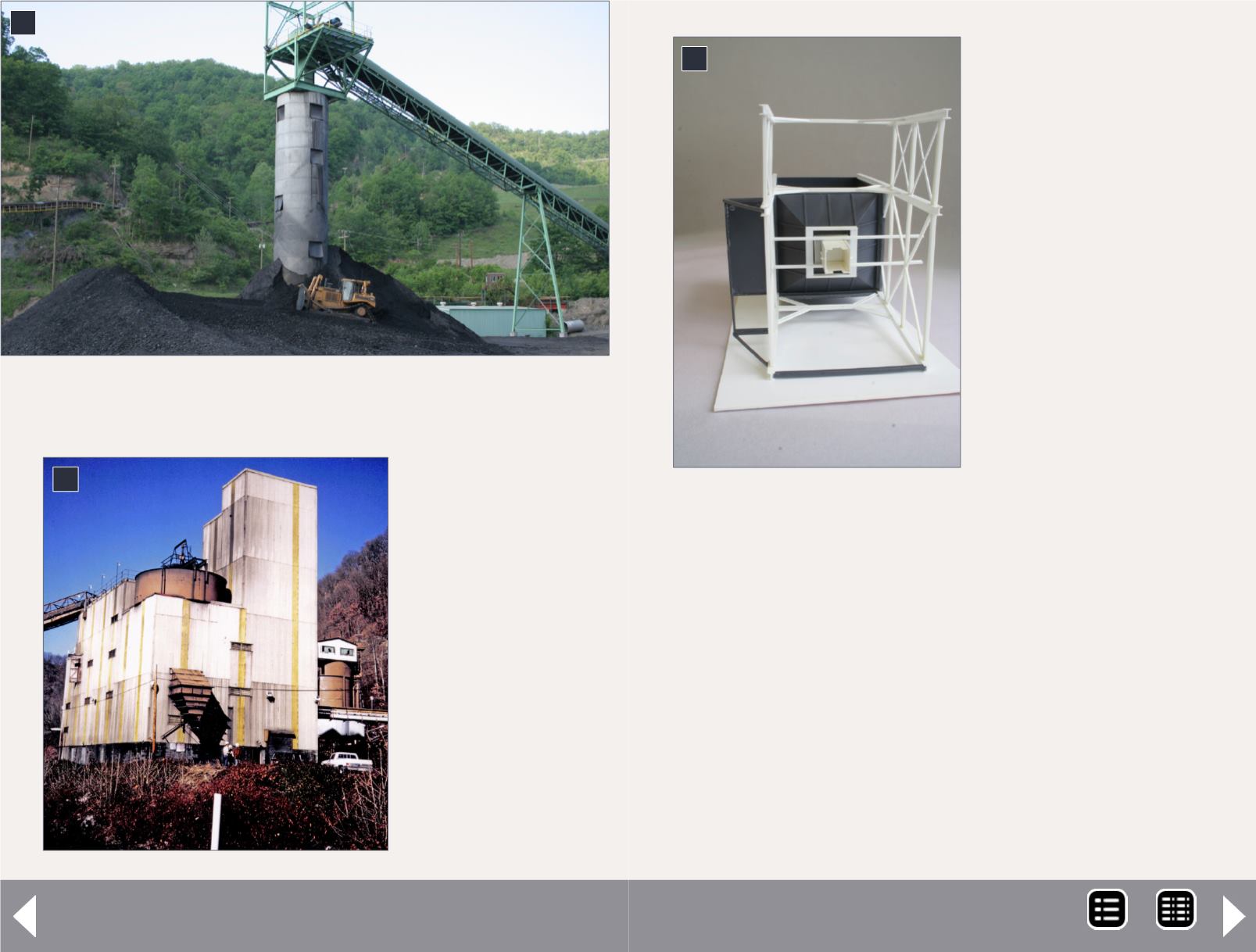
the coal movement would
be from right to left. A
conveyor originating in
an underground mine
is a new addition. I kept
the run-of-mine coal rail
delivery operation from
coal tipples located on the
layout, as well as trucked-
in coal from nearby strip
mines. Another important
addition was increased rail
capacity for inbound run-
of-mine coal, and sepa-
rate trackage for loading
unit trains. The previous
track arrangement had
two tracks for run-of-mine
coal unloading and unit
train loading. There was
not enough room for either operation, plus the two operations
could not be accomplished at the same time.
I begin a coal load-out project, or any other aggregate opera-
tion, at the rail loading point, and work back toward the main
complex. For starters, I use some basic clearance dimensions
for the type of railcars that will be loaded/unloaded. 100-ton
hoppers are 12.5’ high from the top of the rails while 55-ton/
70-ton hoppers are 11’ high from the top of the rails. Peaked
ends generally bring the height of these cars to 12.5’. These
dimensions determine the height from the top of the rails to
loading chutes or other equipment that may be over the rails.
4. Bulldozer working ICG’s coal stacker preparation
plant near Raven, KY.
4
The Wheeling-
Pittsburg Steel
coal preparation
plant near Omar,
WV. This photo
was the basis
of the main
preparation plant
on my layout.
5
Fast loader - 3
6. Reworked Walthers Flood
Loader kit.
6
MRH-Dec 2014


